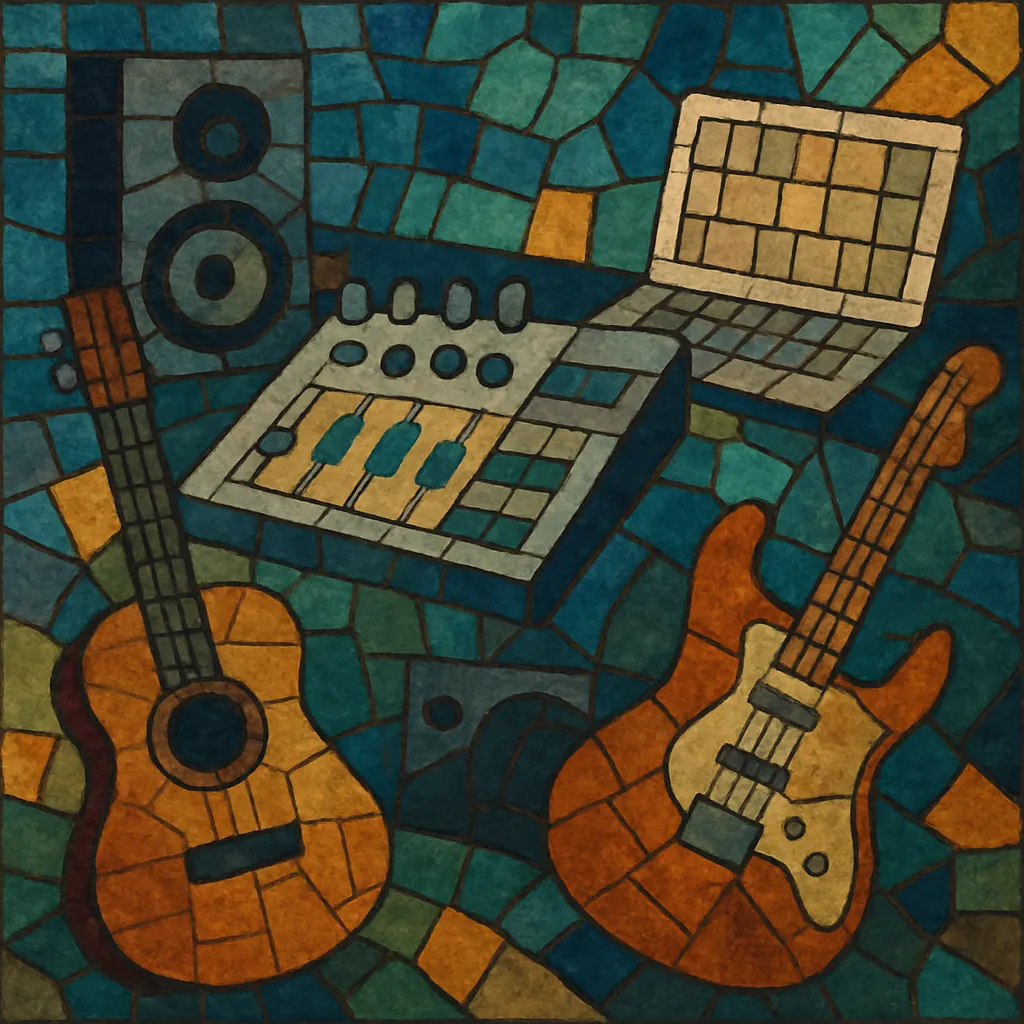
Production music (also called library or stock music) is music created specifically for licensing in film, television, radio, advertising, games, and online media rather than for retail release. It is organized in catalogues by mood, style, tempo, and usage, making it quick for editors and producers to find suitable cues.
Stylistically, production music is highly diverse. It spans orchestral and light music traditions, jazz, lounge, rock, funk, and contemporary electronic idioms, but is unified by functional design: clear edit points, modular structure, alternate mixes, and versions tailored to typical broadcast durations. Successful cues balance memorability with unobtrusiveness so they can support narrative, voice-over, and sound design without distracting from them.
Production music emerged alongside silent cinema accompaniment and early radio. British companies such as De Wolfe began supplying cue sheets and pre-cleared collections for exhibitors and broadcasters. With the rise of sound film in the late 1920s, the idea of a pre-recorded, licensable music library crystallized, offering cost-effective alternatives to bespoke scoring.
The postwar boom in broadcasting created steady demand for versatile background music. Publishers formalized catalogues categorized by mood and situation (newsreel, comedy, travelogue). Light music and orchestral miniatures dominated, recorded by session orchestras with pristine mono and later stereo fidelity.
British labels such as KPM, Chappell, De Wolfe, Bruton, and Themes International, and continental libraries like Tele Music and CAM, defined the classic library sound. Composers wrote stylish, groove-forward cues—funk, jazz, beat, and dramatic orchestral—that later became a rich sampling source. Modular arrangements, prominent drums and bass, brass stabs, and memorable riffs made these cues instantly useful for sports, news, game shows, and documentaries.
As cable TV, commercials, and corporate video expanded, libraries diversified into rock, synth, and early digital genres. Metadata improved, and "alts" (underscore, no drums, beds, stings) became standard deliverables. International libraries (e.g., Sonoton, UBM, Universal Production Music) scaled catalogues and distribution.
Digitization and search-driven platforms enabled rapid discovery by keywords, BPM, and mood. Micro-licensing opened production music to indie creators, YouTubers, and game devs. Aesthetic threads from vintage library recordings resurfaced in reissue culture and influenced hauntology, vaporwave, and related sample-based scenes. Today, production music spans everything from epic hybrid orchestral to minimal ambient beds, optimized for broadcast loudness, stems, and cutdowns.
Across eras, production music is engineered for editability: clear sectional form, button endings, easy cut points, and supportive harmonic rhythm. Its core purpose is narrative utility—enhancing pace, emotion, and clarity while leaving space for dialogue and sound effects.
Clarify usage (promo, documentary, sports, corporate, trailer) and target emotions. Decide whether the cue should lead (feature theme) or support (underscore/bed) and whether it must leave space for voice-over.
Write in modular sections that build energy (e.g., A–A'–B–B'–C) with clear downbeats and predictable 4/8-bar phrases. Include edit points, risers, and button endings (no long fade-outs). Deliver standard versions: full mix, underscore, no drums, drums & bass, 60/30/15-second cutdowns, stings, and seamless loops.
Favor diatonic, functional harmony that sustains mood without stealing focus. Use pedal tones and slow-moving chords for beds; reserve catchy hooks for feature themes. Avoid dense midrange activity (2–4 kHz) when voice-over is expected; move hooks higher or lower in register.
Choose tempos that suit the brief: 90–110 BPM for corporate explainers, 120–130 for lifestyle/sports, slower for emotive documentaries. Use steady grooves with minimal syncopation for VO clarity; add fills at section changes to signal edit points.
Match idiom to context: hybrid orchestral (strings, brass, pulses, hits) for epic/sports; clean funk or indie rock for lifestyle and sports; warm synths and guitars for corporate; ambient pads and light piano for documentary beds. Include tasteful transitions (whooshes, reverses) and impacts, but keep them mix-friendly.
Mix with broadcast in mind: controlled dynamics, uncluttered midrange, and headroom for VO and SFX. Provide stems (rhythm, harmonic, melody, FX) and alt mixes. Name files clearly and add detailed metadata (mood, instrumentation, BPM, key, keywords) to aid search.
Overwriting the midrange, overly busy melodies under VO, lack of button endings, and no cutdown-friendly structure. Keep cues concise, purposeful, and easily editable.

